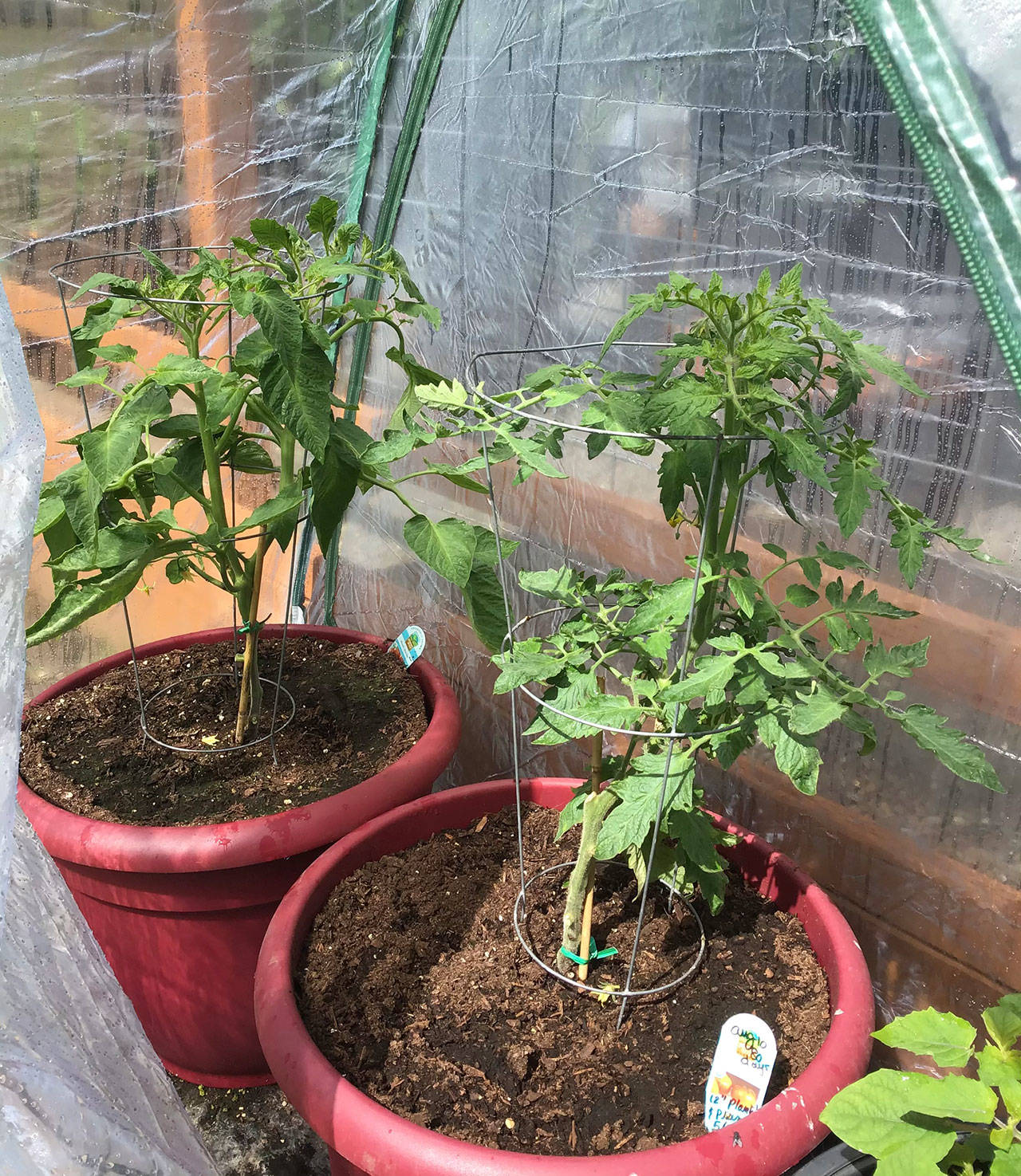This week the plant clinic question comes just in time for tomato season: “With the purchase of my home in 2018, I inherited a greenhouse with beautiful tomatoes ready to harvest. In the two years since, I have tried growing similar tomatoes in the same greenhouse but get very few, small tomatoes. What am I doing wrong?”
Greenhouse tomatoes can suffer from several problems, including temperature extremes, excessive humidity, and lack of pollination. If your plants are otherwise healthy and just not producing fruit, most likely the problem is insufficient pollination.
Producing a ripe, red juicy tomato is the Holy Grail for most Olympic Peninsula gardeners. Tomatoes are a warm weather crop and enjoy a long, warm summer. The cool growing season on the peninsula can be a challenge that may send tomato growers into a high tunnel (typically a structure with roll-up sides and large open doors at each end) or a greenhouse.
A greenhouse is a good way to modify your tomato’s growing climate by increasing the temperature at both cool ends of the growing season. The method can be a great success but will require more time and attention than tomatoes grown in an open garden.
Best practices
A general review of best practices for growing greenhouse tomatoes is probably the best way to begin answering this reader’s question. The happiest plants will produce the tastiest tomatoes.
Regular garden tomatoes can be grown in a greenhouse, but select a variety specifically bred for greenhouse conditions for better success. These varieties have good disease and disorder resistance and can be found listed in popular seed catalogs.
Train indeterminate varieties of tomatoes to a main stem or leader. Overgrown plants will get to too heavy and can greatly reduce air movement. Once the plant is 12-18 inches tall, pinch out the suckers (weekly) that develop in the crotch where the lateral branch meets the main stem.
Tomatoes thrive in warm soil with optimum air temperatures between 60-80 degrees (never to exceed 90 degrees). Vents, fans, and shade material are required to achieve these temperatures and will also help with humidity control, which should be kept around 70-75 degrees to avoid fungus problems.
Do not use regular garden soil for greenhouse tomatoes. It is essential that the growing media is clean and free of pests and disease. Tomatoes are heavy feeders, so using a balanced fertilizer on a regular schedule is recommended (following product recommendations).
Tomatoes need consistent daily water and the demand increases as they mature. Too little or too much water can both cause problems. A timed and closely monitored drip system is highly recommended for greenhouse tomatoes.
Pollination
Tomatoes are self-pollinating, meaning they have both the stamen (male) and pistil (female) parts in one flower. However, tomato pollen can be heavy and sticky and successful pollination requires the movement of pollen from stamen to opening of the pistil. Outside the greenhouse, this is usually satisfied by insects and air flow. Inside a greenhouse, you may need to alter conditions and manually aid pollination.
Most commercial tomato growers use a plant vibration system to get the pollen moving. For home greenhouses, that system can be you. Once the flowers are in bloom, rattle the supports or gently flick the flower clusters every day. For a small greenhouse you can replicate the action of insects and hand pollinate using a very soft paint or make-up brush (natural fiber is best).
Gently twirl the brush into the open flower(s) to collect and transfer pollen. If self-pollinating more than one variety, use a separate clean brush for each.
Excessive humidity can make the pollen too heavy to move around, so choose a time of day with the lowest humidity to self-pollinate. Midday is when pollen is normally distributed.
For more detailed information on growing tomatoes in general, including pest management disease identification, and plant management, check out WSU Fact Sheet: Growing Tomatoes in Home Gardens, is an excellent resource. It can be downloaded free at pubs.extension.wsu.edu (search for WSU publication FS145E).
Susan Kalmar is a Clallam County Master Gardener volunteer.


